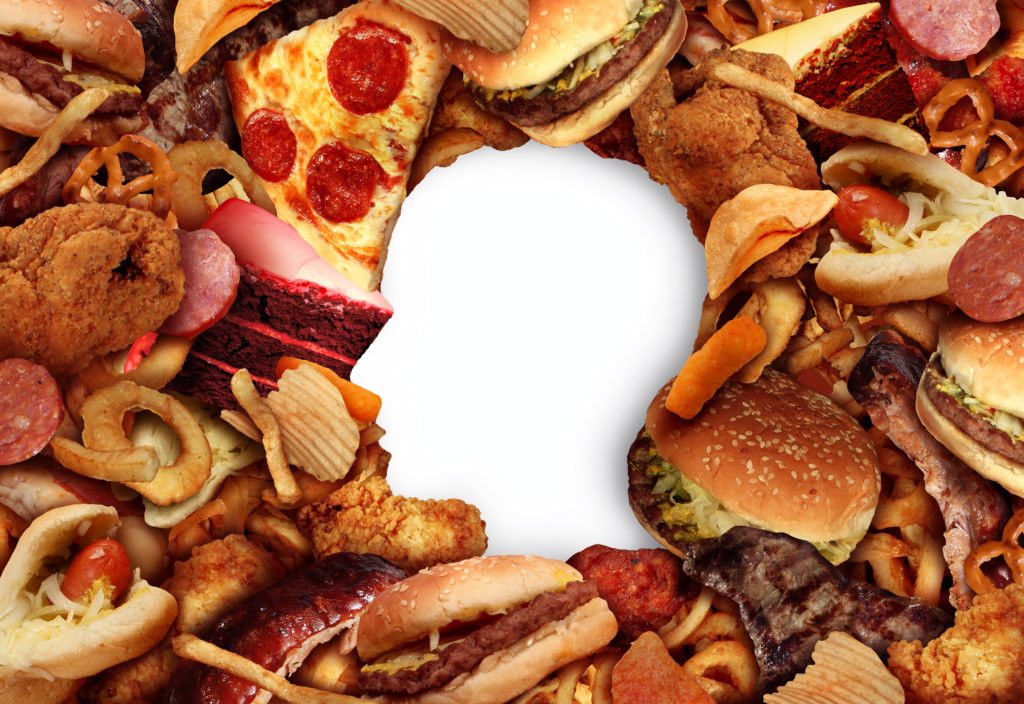
Binge-eating disorder is the commonest of the Eating Disorders but there is widespread misunderstanding about what it is and is not, and, unfortunately, it usually goes undiagnosed and untreated. In this article, I explain in a simple manner exactly what binge-eating disorder is and how it is much more than simply overeating.
Here, I have taken the DSM-5 Diagnostic Criteria and simplified them a little to make them easier to digest (no pun intended).
Essential characteristics
To be called binge-eating disorder, the following three characteristics MUST be present. They relate to Quantity, Quality, and Distress:
1. Quantity: Eating a LOT more food in a short period of time than what other people would eat
2. Quality: Feels a lack of control over eating during the binge episode, i.e., cannot stop or even cut down on how much the person is eating
3. Distress: Marked distress about the binge eating
Optional characteristics
In addition, at least three of the following five characteristics should be present for binge-eating disorder to be diagnosed:
Before
Eating a lot even when not feeling hungry
During
– Eating alone because of being embarrassed by how much one is eating
– Eating more quickly than usual
After
Physical: Eating until one is more than full, i.e., is physically uncomfortable
Psychological: After the binge-eating episode, the person feels disgusted with oneself, depressed, or very guilty
How often and for How long?
For the problem to be called binge-eating disorder, the binge eating has to:
– Have occurred at least once a week
– Have been going on for at least 3 months
How is it different from bulimia nervosa?
In binge-eating disorder, the recurrent inappropriate compensatory behavior is not present.
Diagnostic code
Binge-eating disorder: ICD-10 F50.8
Next steps
Next, please read the following articles:
Binge-eating disorder screener-7 (BEDS-7)
What are the medication options for treating binge-eating disorder?
Lisdexamfetamine (Vyvanse®) for binge-eating disorder
Related Pages
Screening for eating disorders
Why it is important for all of us to screen for eating disorders
How to screen for eating disorders
A simple tool to screen for eating disorders
How to evaluate persons who have or may have an eating disorder
Binge-Eating Disorder Screener-7 (BEDS-7)
Clinicians’ guide to screening tests in mental health
Binge-eating disorder
What exactly is binge-eating disorder?
Binge-eating disorder screener-7 (BEDS-7)
What are the medication options for treating binge-eating disorder?
Lisdexamfetamine (Vyvanse®) for binge-eating disorder
Binge-eating disorder: Expert interview with Leslie Citrome, MD
Food addiction
Yale Food Addiction Scale
Instruction sheet for the Yale Food Addiction Scale
Resources for eating disorders
Best books about eating disorders (for patients and their families)
Best books about eating disorders (for clinicians)
Practice guidelines for Eating Disorders
What are the BEST books on each topic related to psychiatry/ mental health?
Copyright © 2016 to 2025, Simple and Practical Medical Education, LLC. All rights reserved. The content on this website may not be reproduced in any form without express written permission.
Disclaimer: The material on this website is provided as general education for medical professionals. It is not intended or recommended for patients or other laypersons or as a substitute for medical advice, diagnosis, or treatment. Patients must always consult a qualified healthcare professional regarding their diagnosis and treatment. Healthcare professionals should always check this website for the most recently updated information.
Leave a Reply